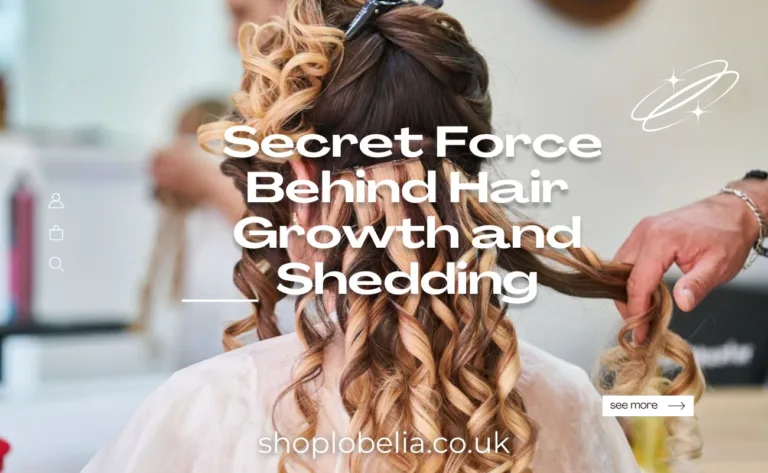Ever feel like your hair sometimes has a mind of its own? One minute it’s thick and glossy, the next it’s shedding faster than your dog in summer. But before you blame that new shampoo or your styling routine, it might be worth having a quiet word with your hormones.
From luscious pregnancy hair to postpartum shedding disasters, hormones influence every stage of your crowning glory’s life cycle. And if you think it’s just a “getting older” thing, think again. Hormones have been calling the shots from the very beginning.
Table of Contents
Understanding the Hair Growth Cycle
Before we dive into the hormonal chaos, let’s talk about the basic life cycle of hair. Your hair doesn’t just grow endlessly. It’s on a set schedule made up of four stages:
Anagen (growth phase)
This is when your hair is actively growing. It usually lasts between 2-7 years depending on your genetics.
Catagen (transition phase)
A short, two-week period where hair growth stops and follicles shrink.
Telogen (resting phase)
Hair just chills out here for about 3 months before it’s pushed out.
Exogen (shedding phase)
Old hair falls away, making room for fresh strands to grow.
Under ideal conditions, about 85-90% of your hair is in the anagen phase at any given time. Healthy cycles mean full, vibrant hair. But when hormones get involved, this nice, predictable system can go completely haywire.
How Hormones Throw a Wrench in the Works
Hormones are basically your hair’s ultimate boss, and sometimes they hand down wild orders.
Oestrogen
Often called the “good hair” hormone, it prolongs the anagen phase. That’s why during pregnancy, when a woman’s body is overflowing with oestrogen, she has thicker, fuller, shinier hair.
Testosterone
High levels or sensitivity to it can lead to hair thinning, especially around the temples and crown. Yes, even for women.
Cortisol
Ah, the beloved stress hormone that wreaks all kinds of havoc with just about every one of our body’s systems. Hair is no exception, and when chronic stress floods your body with cortisol, it pushes hair prematurely into the telogen phase. This leads to excessive shedding.
Ever seen someone rocking glowing, thick hair during pregnancy? Hormones.
Noticed serious hair fall a few months after childbirth? Hormones.
Hit midlife and realised your ponytail isn’t what it used to be? You guessed it—hormones.
Even lifestyle trends like the Curly Girl Method, which embraces natural curls, can only go so far if your hair loss is internally triggered. No amount of co-washing or plopping can override a hormone imbalance.
External Factors That Affect Hormonal Balance
It’s not just genes that determine your hormone activity. Daily habits and choices can have a huge effect on hormonal harmony.
Diet, lack of sleep, major life changes, intense stress, and certain medications can all impact the delicate balance.
A case in point is hormone-based treatments, including contraceptive injections. The Depo-Provera lawsuit in particular, has shone a spotlight on just how much damage can be done with hormones. It can disrupt hormonal patterns, sometimes influencing growth or triggering unexpected shedding.
But it doesn’t end there. TorHoerman Law states that synthetic hormones, like the progestin found in Depo-Provera, have been linked to serious health conditions. Hormone imbalances, bone density loss, and brain tumors are among these.
While it’s rare for these treatments to be the sole cause of hair loss, if you’re noticing changes and have started or stopped hormonal medication, it’s best to speak to your doctor.
Supporting Your Hair Through Ups and Downs
You can’t exactly boss your hormones around, but you can give your hair a fighting chance:
Balanced nutrition
Iron, vitamin D, biotin, and protein are hair heroes. Research shows that low iron levels are associated with up to a 30% higher risk of hair thinning, particularly in women under 40.
Stress management
Easier said than done, but finding stress relievers you love—from boxing classes to meditation apps—can lower cortisol and protect your follicles.
Gentle hair routines
Embrace low-manipulation styles during the day, and protective styles at night. If you’re a Curly Girl devotee, keep up the deep conditioning and finger detangling.
Healthy hormone support
Talk to your GP about getting your hormone levels tested if you notice sudden changes. Even small tweaks, like supplementing with vitamin D or adjusting your contraceptive, can make a big difference.
Remember: hair loss doesn’t have to be permanent. When the root cause is addressed, many people see regrowth within six months to a year.
Hormonal changes are a natural part of life, just like the seasons your hair goes through. The trick isn’t fighting them, but learning how to work with them. With smart habits, a bit of patience, and understanding what’s really happening under the surface, you can support your hair’s health through every twist and turn.
